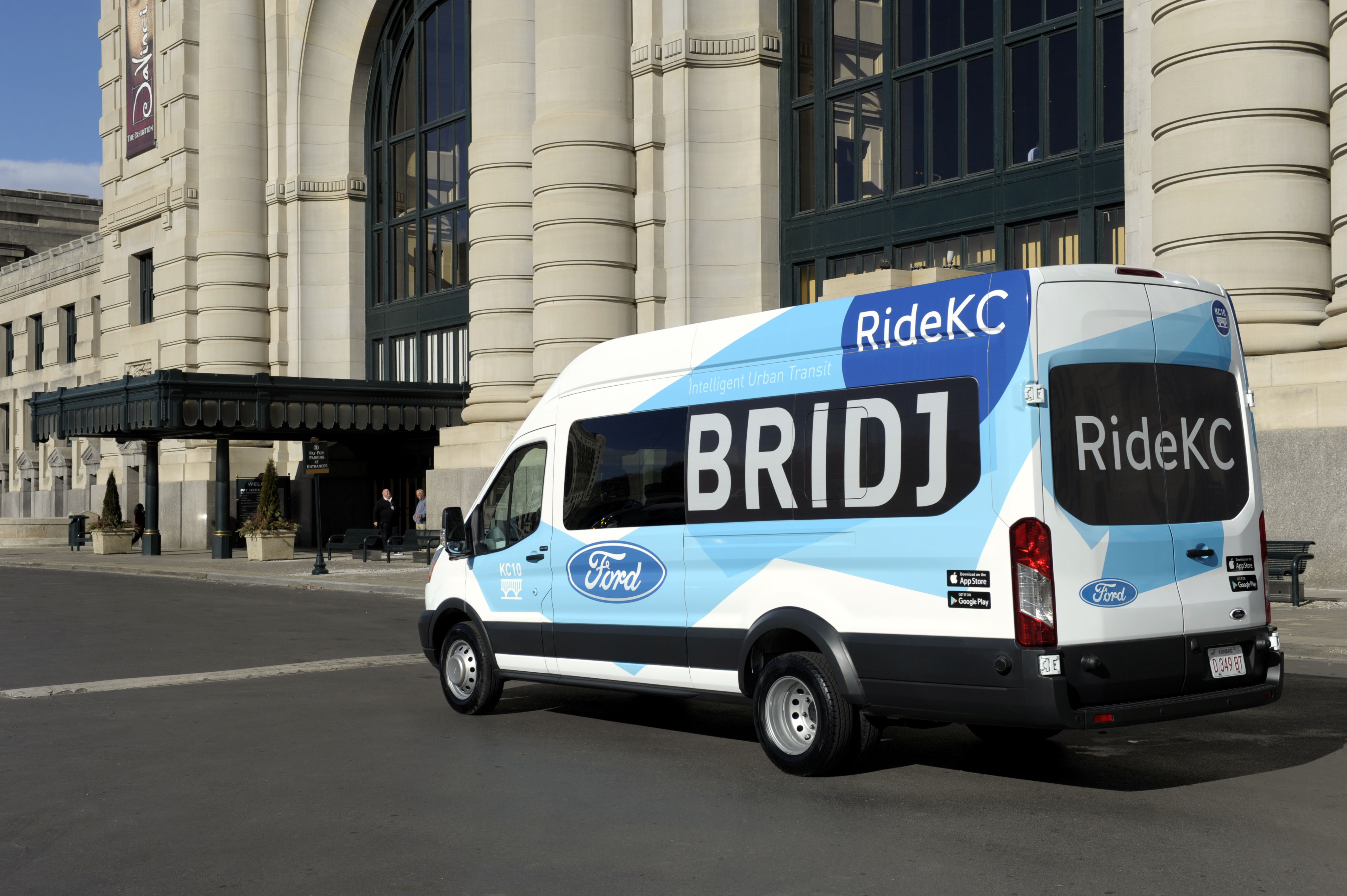
The Ride KC: Bridj pilot program will use a fleet of Ford Transit vans to augment and serve as a gateway to other forms of transit. Many pick-up locations will be at bus stops and areas served by existing Kansas City transit and bike-share systems.
It’s nearly a year to the day since the Kansas City Area Transit Authority launched an on-demand transit service pilot project with Bridj. Hailed as the ‘future of low density transit’,” the app-based program provides peak hour on-demand van rides from the University of Kansas Medical Center and 18th and Vine Jazz District to Downtown Kansas City. But available data on the program indicates that usage is practically nonexistent.
KCATA itself hasn’t yet released ridership numbers, but data reported to the Kansas City MPO reveals that six months into the pilot, it had seen 597 total rides. These numbers are a far cry from the 200 riders per day projected at the program’s outset.
Agency staff say poor communication to the public has been the driving factor behind lack of ridership. Marketing is an important component of new services and indeed the Tampa-area Pinellas Suncoast Transit Authority saw similarly low utilization for its on-demand pilot until joining forces with the advertising might of Uber. However, awareness is just one piece of the puzzle. In its recent survey about the KCATA-Bridj pilot, the University of California’s Transportation Sustainability Research Center found that residents didn’t find the service particularly useful. Nearly half of those who requested a ride using the service only used it once, despite introductory promotions. Of the people who downloaded the Bridj app but never used it, three quarters indicated this was because it didn’t serve locations where they wanted to go. A third also responded that it didn’t operate when they needed it. In its current state, KCATA on-demand pilot program appears to be inconvenient for all but a handful of people.
KCATA should be applauded for its experimentation and should continue to do so. But ultimately agencies and advocates debating on-demand first/last mile services in low density contexts need to take a close look at the numbers and question whether transit with extreme per-ride costs is viable. With expenses translating to over $1,000 per ride, the future of low density transportation places may not be on-demand services like Bridj.